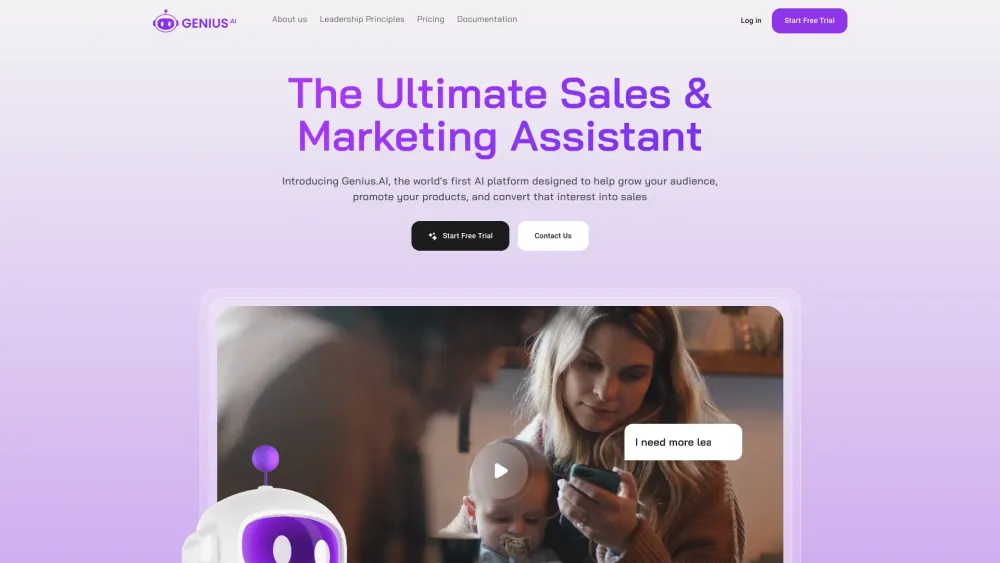When you secure venture capital, your investors will influence everything—from your strategic direction and product development to your overall mindset. This might not align with your vision, particularly in the rapidly evolving AI industry. For this reason, I advocate for bootstrapping your AI startup: it allows you to maintain complete control over your business.
Bootstrapping can be a strategic advantage, especially when funding is scarce. Here are three key areas to concentrate on to build your startup while remaining independent.
Focus on Solving a Specific Problem
Bootstrapping necessitates that you involve your clients in your product development process. This not only helps you comprehend their businesses, challenges, and blind spots but also enables you to concentrate on addressing a particular issue.
Once you've identified the problem, assess your customers’ data capabilities to determine if they possess the necessary information to tackle this issue. Establish a user feedback loop to continuously test your solution, enhance your AI capabilities, and deliver the results your customers expect.
Utilizing an agile methodology will enable you to evaluate output quality and identify adjustments needed. A quicker feedback loop will enhance algorithm learning and improve performance more rapidly.
Your organization needs to be data-mature to effectively manage an AI platform. Therefore, familiarize yourself with your client's data formats before you begin integrating. Is the data sourced from one point or multiple locations? Are there redundancies to address?
Evaluate the quality of the data and its origins. If your clients have reliable data, you can design APIs that accept this information, allowing your AI to leverage it effectively.
Leverage Your Bootstrapped Status to Attract Talent
Attracting and retaining top talent is crucial, especially given the competitive landscape for skilled developers. You may not rival tech giants like Google or Meta in resources, so clearly articulate your vision to inspire belief and commitment among potential hires.
While companies like Microsoft may offer higher salaries, your bootstrapped startup can provide unique advantages. Present opportunities for candidates to make a real impact, influence product development, and innovate using cutting-edge technology to achieve results.
Though Big Tech may excel in salary and brand recognition, your startup can offer a compelling overall package that includes equity, flexibility, and autonomy—elements appealing to talent who want to thrive in a dynamic, fast-paced environment.
Once you identify engineers with strong technical skills, encourage them to engage across all tech aspects, helping them grow into well-rounded full-stack developers. Foster an environment where a back-end developer can also learn about front-end interactions and collaborate with your UI/UX team.
Don’t make the mistake of limiting your talent search to your immediate area. In today’s landscape, remote teams are the norm. The ideal developer might be in a different country, so cast a wide net to find exceptional talent and unite them under a cohesive team.
Ensure strong leadership in every team and dismantle siloes to promote collaboration. Avoid the pitfalls of isolated development, which can lead to mistakes and blind spots.
Prioritize Security from the Initial Code
Handling sensitive data mandates a rigorous focus on security. Your platform architecture must be designed to safeguard each client’s information effectively within your system.
It’s crucial not to rely on a single database, as this can result in data mingling. Implement strict divisions, permissions, structures, and firewalls. Your development timeline should prioritize these security measures right from the outset.
Clients may conduct their own security audits as part of their vetting process, meaning you need to meet their standards, service-level agreements, and protocols by prioritizing security from the very beginning.
Getting these fundamentals right will position you to work with clients who can make substantial investments. Your AI solution must cater to large enterprises, with a firm understanding that security is the foremost concern.
Address any vulnerabilities through a comprehensive testing process including smoke tests, regression tests, unit tests, system tests, integration tests, and acceptance tests.
Start with the Core Business Problem
Ultimately, a startup's mission is not merely to develop a product or acquire customers. It is about identifying, understanding, and resolving a particular problem, and delivering that solution to customers in need.
Building relationships and solving customer issues is how you bootstrap and organically grow your AI business. This approach won’t lead to immediate riches. Founders who choose to bootstrap must be prepared for the long journey, reinvesting every dollar into product development, focusing on team building, and fostering innovation.




